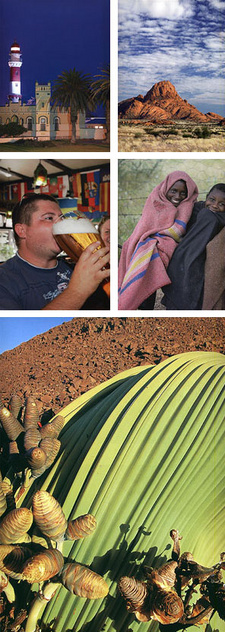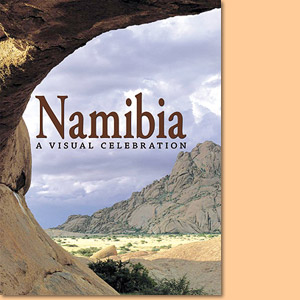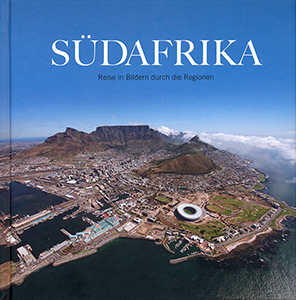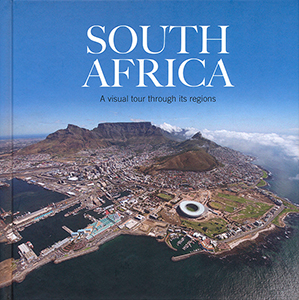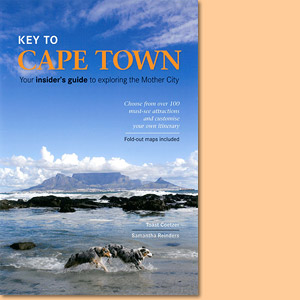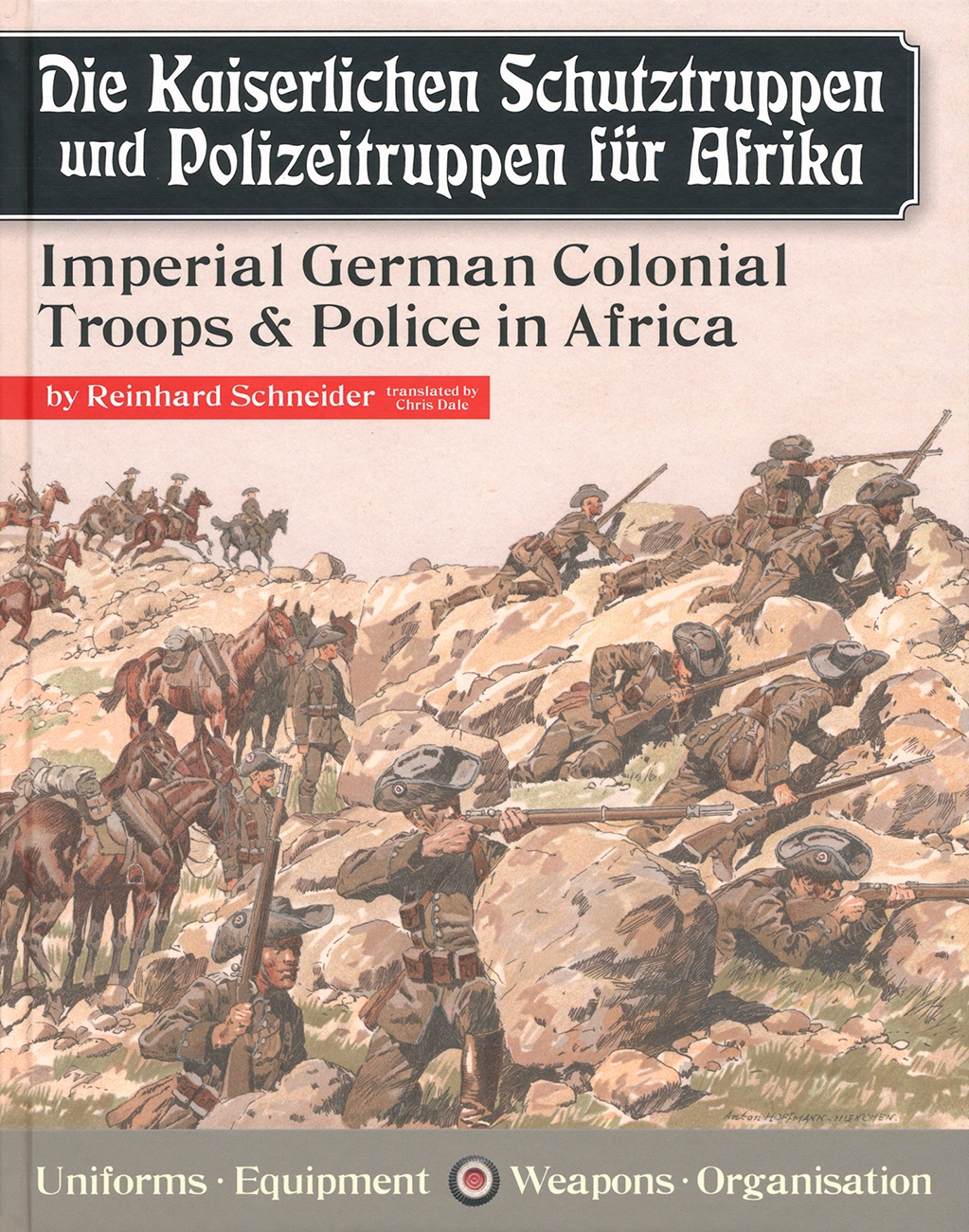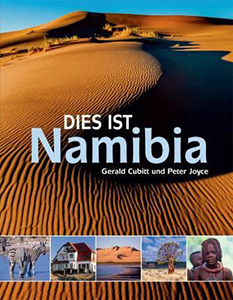Namibia. A visual celebration, by Jéan du Plessis; Toast Coetzer; Kathryn McKay
All aspects of this stark and compelling land are dramatically depicted in Namibia - A Visual Celebration, by Jéan du Plessis, Toast Coetzer and Kathryn McKay.
Jean du Plessis Toast Coetzer Kathryn McKay
Namibia will haunt you. It will take a piece of you and change it. It is impossible to know beforehand how or where it will happen, but whether in the chilly, mysterious desert mists of Swakopmund, in the lone tracks of a brown hyena in the dunes or in the ghostly silence of Sossusvlei's ancient dunes, it will find a way into you. For good. The tone of the Namibian geography can move even the most jaded traveller with its large, sighing sights. Times and places for introspection abound. Yes, this country is one massive vacation of the mind. Add the Namibian people to the equation and you begin to realise that this is a truly special place. The Namibians inhabit just a handful of medium-sized towns - even the capital, Windhoek, has a business district reminiscent of a suburb in a big city - and a smattering of smaller towns, mostly in the interior. There is also a large rural population on commercial farms and those on tribal land in the north, like the pastoral Himba. The people who call this home have come from everywhere. Some may have been here since the dawn of time, others came from the north and from Africa's great lakes, some migrated from the south and still others arrived by sea from Europe. The San (Bushmen) may be its most famous residents, but the Herero - the women often postcarded in their characteristic colourful Victorian-era dresses and headgear - are equally recognisable. The Khoi-speaking Nama and Damara are not far behind with these fashions, while the biggest population groups - the Owambo (who constitute almost half the population), the Caprivians and the Kavango - speak Bantu languages. Afrikaans, English and German are commonly spoken, and not just by the white population, which is largely made up of German and South African expatriates. The Basters of Rehoboth speak Afrikaans, as do many of the coloured groups.
With all this racial diversity, Namibia sounds complicated and potentially volatile, but the opposite is true. Especially since gaining full independence in 1990, the country has been peaceful, its people intermingling (and marrying) freely, their hospitality extending to any visitors from both near and far. Seldom can the term 'vastness' be more aptly used than to describe this Southern African country. With its hot, sandy western side up against the cold Atlantic, it slots in snugly atop South Africa, which is to the south, with Angola to the north and Botswana to the east. It looks like a solid, manageable block of land, except for that strange 'finger' sticking out towards Zambia. That is the Caprivi Strip, product of the last days of the 'scramble for Africa', when Britain chopped a piece off Bechuanaland (now Botswana) and gave it to Germany in exchange for Zanzibar.
Like so many modern African countries, Namibia's borders are a legacy of colonial times, but its history goes back so far that any period of dominance or imposed rule by a European country seems almost incidental, and fleeting at that. Namibia's tourist brochures portray none of the more conventional holiday imagery, like honeymoon couples on white beaches with swaying palm trees above. A large part of Namibia's coast is known as the Skeleton Coast, and is littered with centuries of ship-wrecks. Very few habitations line the shore and even the most charming of them, like Lüderitz, are more often than not wind-blown and desolate places. Herein lies the allure of the country. It seems impenetrable and hostile, but once you start exploring, you realise it is the exact opposite. As the land lies stretched in every direction - sometimes jagged, barren outcrops, sometimes thorny savannah, sometimes blistering red desert sands - it promises nothing right to the horizon where, once reached, the same vista will endlessly repeat itself, maybe with slight variations.
But find a town, or just a habitation - maybe a farmer's homestead - and you will find people willing to share every aspect of their lives, people shaped by this severe land and its extreme weather. Just under two million people live here, but in an area of 824 292 km² (bigger than the United Kingdom and France put together), they disappear almost completely. This luxury of space is Namibia's biggest drawcard. Yes, its star attraction is its absence of distractions. You could travel one of the major highways all day long and encounter only a handful of cars. As if revelling in the space available to them, the country's tourist attractions are equally enormous. From the wildly eroded Fish River Canyon in the south to the vast Etosha Pan in the north, the geographical features spill over the canvas in front of you as if competing to impress.
There are no half-measures when it comes to the weather either. While the temperatures are much more bearable during the winter months, Namibia has for the best part of the year, a hot, dry climate. The ocean is cold enough to relegate swimming to being a niche activity, while the wind in places like Walvis Bay lures windsurfers from across the world. It is the sun, however, that you will remember - a sun that will make you appreciate shade like never before. Summer thunder-storms occur and, when the fat, blue-and-white clouds release their bounty on the land, the effect is instantaneous: grass grows where previously there was only sand, trees push green from their slumbering branches and overnight the landscape turns into a short-lived land of plenty.
Namibia is a country of contrasts, where elephants survive in near-desert conditions, where enormous flocks of flamingos paint pink swathes in the most unlikely places and where people thrive against all odds. Its beauty is raw and unpolluted, its days brightly lit by a seldom-wavering sun, the nights frequently clear and ablaze with stars. Convention calls lush green gardens beautiful. Namibia is a garden of rock and sand and bizarre plants, plentiful antelope and predators. A savage, raw, parched beauty, but beauty like nowhere else you have ever been before.
This is an extract from the book: Namibia. A visual celebration, by Jéan du Plessis, Toast Coetzer and Kathryn McKay.
Book title: Namibia. A visual celebration
Authors: Jéan du Plessis; Toast Coetzer; Kathryn McKay
Struik Publishers
Cape Town, South Africa 2007
ISBN 9781770073623
Hardcover, dustjacket, 28x37 cm, 160 pages, throughout colour photos
du Plessis, Jéan und Coetzer, Toast und McKay, Kathryn im Namibiana-Buchangebot
Namibia. A visual celebration
Namibia. A visual celebration covers all aspects of this stark and compelling land in dramatically depicted photographs.
Südafrika: Reise in Bildern durch die Regionen
Ein in deutscher Sprache erschienener Südafrika-Bildband mit schönen Bildern einer Reise durch die Regionen des Landes.
South Africa: A visual tour through its regions
"South Africa: A visual tour through its regions" is a nicely made coffee-table book of a middle-sized scale.
Key to Cape Town: Your insider’s guide to exploring the Mother City
Key to Cape Town is a insider’s guide to exploring the Mother City of South Africa.
Weitere Buchempfehlungen
Auf den Spuren der Else Sonnenberg: Unterwegs in Namibia, 100 Jahre nach dem Herero-Aufstand
Auf den Spuren der Else Sonnenberg: Unterwegs in Namibia, 100 Jahre nach dem Herero-Aufstand: Ein Bildband mit Originalzitaten aus ihren Memoiren Wie es am Waterberg zuging.
The Imperial German Colonial Troops & Police in Africa
The Imperial German Colonial Troops and Police in Africa: uniforms, equipment, weapons and organisation.
Dies ist Namibia
Dies ist ein gut fotografierter Namibia-Bildband mit gelungener Motivauswahl und einer ausführlichen landeskundlichen und geschichtlichen Einführung.

